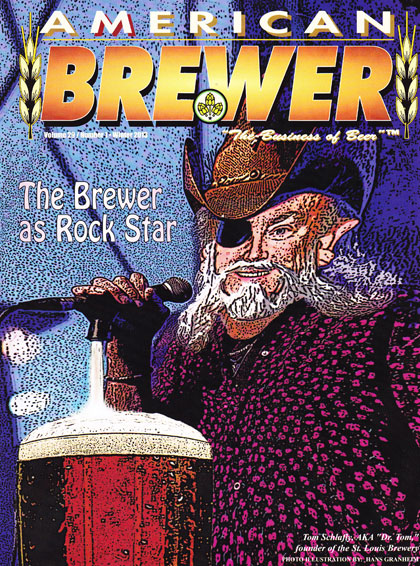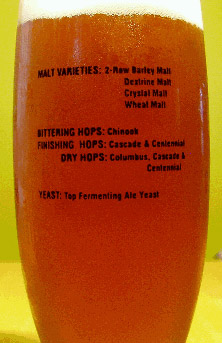Don Russell (“Joe Sixpack”) offered a great overview the other day of why Anheuser-Busch InBev will be dropping big bucks Sunday for Super Bowl ads supporting the new Budweiser Black Crown and Beck’s Sapphire.
It’s about driving the conversation. Grant Pace, the guy who thought up the Bud Bowl, has the complete explanation. Worth the time it takes to read (scroll to the bottom).
Black Crown emerged from an initiative A-B called Project 12 1 (sorry, age check required), which I wrote about in the January issue of All About Beer magazine. My interest was more in 63118, the Project beer brewed in St. Louis.
(I liked it much better than 91406, the Los Angeles beer chosen to become Black Crown. Of course, that’s probably a good touch point — I’m not the target audience for Black Crown; nor are the five or so of you reading this.)
However, my story ended up being as much about marketing — relevancy and conversation — as about the nuts and bolts of 63118.
“Until two years ago there were a lot of 21 to 27-year-olds who weren’t drinking Bud,” Nate Scudieri, Budweiser senior brand manager, said after St. Louis brewmaster Jim Bicklein led us through parts of the brewery Scudieri hadn’t seen previously (apparently they don’t get a lot of requests to see the hop storage area). “It wasn’t as relevant a brand to them.
“What it (Project 12) does, it gets consumers to look at Budweiser differently,” Scudieri said. “It exists to give people a reason to try Budweiser (itself) again, when they see the sort of things Budweiser is capable of. (Drinkers 21 to 27 years old) are interested in finding what’s new in beer. Styles, ABV, color. They want to discover the beers and share them with their friends.”
I’ve been known to have a beer or two with Mike Kallenberger, who comments from here from time to time. He operates Tropos Brand Consulting and previously worked for 30 years at Miller Brewing and MillerCoors. He has on occasion brought up the term “share of mind.” Those with a long memory consider those dirty words, because they remember when A-B put the clamps on distributors, demanding full “share of mind,” making it clear whose brands should get their full attention.
But as Kallengberger points out, “share of mind” leads market share. “It’s much, much bigger (for craft beer) than the percentage of sales,” he said. “Maybe 40 or 50 percent of the quote, unquote, conversation.”
Which brings us back to what what Pace wrote Russell in that lengthy email.
In that way the big beer companies lost the conversation. If you wanted to discuss, talk about or mention beer all the mindshare was in the microbrews. And meanwhile, young people migrated to cocktails and the healthy set over to wine. Both not coincidentally offer not only an endless variety of styles and flavors, but also conversation, lore and positions and sides to take. Fruity or dry? Chilled? Dirty or neat? Ice? Soda? Olive, onion or capers? The discussion is endless.
There are plenty of examples of how large brewing companies are trying to make their beers part of the conversation again. Curiously, by writing about this, Russell and I are promoting that conversation, which I’m about to compound by giving you a bunch of links. But to be clear, in case you hadn’t considered it, smaller brewing companies do this too. Although I’ve seen the Brewers Association’s “Craft vs. Crafty” initiative described as ill-considered it has clearly attracted the attention of the people the BA wants paying attention. (And last week, when the Wall Street Journal posted the story and video with a link below I got an email asking if I thought this was an example of “craft vs. crafty.” Tell me that “c v. c” hasn’t changed the conversation).
Also, the other day Charlie Papazian tweeted a link to the “I am a Craft Brewer” video to his nearly 20,000 followers. Just to keep it top of mind.
Now to the links.
* Budweiser joined Twitter this week (www.twitter.com/budweiser), and the first tweet was a picture of the newest Clydesdale. This is part of a Twitter/Facebook promotion to name this Clydesdale. The Super Bowl commercial that features baby foal had already been viewed 2.5 million times on YouTube by Saturday morning.
* Compare the Clydesdale commercial to the one for the one for Black Crown or Beck’s Sapphire. Obviously more than one beer conversation going on these days. And, by the way, there’s a Saphire banner on the top of the YouTube home page today.
* Here’s an interview with Jill Vaughn, who has worked in A-B’s St. Louis brewery since 1996 and is in charge of the Shock Top brand. Shock Top, of course is one of those “crafty” beers that might fool consumers into thinking it is “craft” rather than brewed in several A-B plants around the country. Maybe, but in St. Louis it sits on grocery store shelves next to Bud Light. Seems pretty obvious. One thing I learned from Kallenberger a few years ago, during a presentation at the Craft Brewers Conference, is that millennials (those Gen Y consumers hitting their prime beer drinkers) value diversity. Female brewer = good.
* Triple points for an African-American, female brewer who is a millennial herself. Meet Rebecca Reid, who was featured in Barron’s about a week ago. She created the recipe for Bud Light Platinum. Now she “is trying to stretch the boundaries of what typically ends up in a beer. Recently she mixed hibiscus flowers with wheat and lemon peels to approximate the taste of a ‘strawberry lemonade’ beer.” I’m guessing that Alan McLeod and Jeff Alworth may not approve.
*****
1 The recipes for the six Project 12 beers were the product of the dozen brewmasters in charge of the company’s American breweries. They collaborated on the beers, creating six that took the names of the ZIP Codes where they were brewed. Consumers tasted them and provided feedback throughout the summer, 10,000 of them at the Made in America Festival – a music extravaganza in Philadelphia headlined by Jay-Z over Labor Day weekend. A St. Louis-area distributor posted when samples would be served at a few taverns not far from our house. So I dropped by one of them on a weekday night. Not until I got there did I realize this was atypical. This was not a special event people drove out of their way for, say like when Stone Brewing and Deschutes Brewery began selling beer in Missouri relatively recently.
There were two representatives there. One would wander over to the bar and invite customers back to sample a couple of ounces of each of the six Project 12 beers. When the woman pouring beer got to 63118 she warned each drinker it was much more bitter than Budweiser itself, even mentioning it contained 18 International Bitterness Units, compared to 10 in Bud.
(A-B seldom talks about IBU in Bud or its other beers. In 1982, Joe Owades, a legend in brewing circles who is credited with developing the first light beer, estimated the bitterness of Budweiser was equivalent to 20 IBU in 1946, and still 17 in the 1970s.)
The 63118 was noticeably bitter, but not exactly a shock to my system. What was striking was the hop aroma, since it turned out most of the hops (Mittelfrüh, from both the Hallertau and Tettnang regions of Germany) were added at the end of boiling, resulting in an elegant, floral-spicy aroma. That’s one reason it was my favorite.

 And now revisit the story that Cilurzo has told many times about over his first “double IPA.” He brewed a beer he called Inaugural Ale in June 1994, the very first batch he made at Blind Pig Brewing1 in Temecula, California. Indeed, he said, “Our equipment was pretty antique and crude, so I wanted to start out with something that was big and, frankly, could cover up any off flavors.”
And now revisit the story that Cilurzo has told many times about over his first “double IPA.” He brewed a beer he called Inaugural Ale in June 1994, the very first batch he made at Blind Pig Brewing1 in Temecula, California. Indeed, he said, “Our equipment was pretty antique and crude, so I wanted to start out with something that was big and, frankly, could cover up any off flavors.”